ASHLEY DARKWOOD outlines the dark and violent history that has made Beaconsfield in Buckinghamshire, one of England’s most haunted villages…
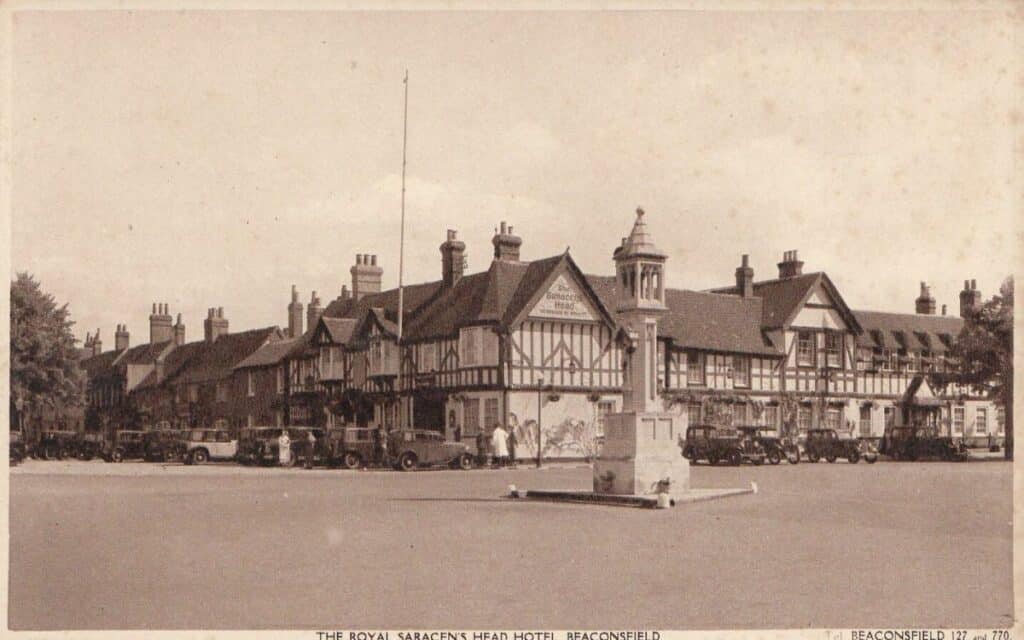
Beaconsfield, Buckinghamshire, is frequently named as one of the most desirable places to live in the UK.
Historically the town has been home to the likes of Enid Blyton, GK Chesterton, Sir Terry Pratchett, Barry Gibb, James Cordon, Pauline Quirke; the list of notables including many current Premiership football stars is endless.
Beaconsfield is divided by the old and new towns, the new town grew around the arrival of the railway station in 1906.
History of Beaconsfield, Buckinghamshire
The old town was originally a Saxon settlement known as Bekensfeld (so yes, it is pronounced “Beckons-Field” and not “Beacons-Field) the town probably came into being as the site where two Roman roads intersected.
St Mary’s and All Saints Church occupies the site of a church originally built in 900AD. The old town is known for the “Four Ends” London End, Windsor End, Wycombe End and Aylesbury End. Each of these roads unsurprisingly indicates the historic direction of travel if one were to set off along their trajectories.
As these road names suggest, Beaconsfield was a critically important halfway point along vital trade routes, lying somewhat equidistant between the City of London and Oxford.
In the 1700s, on a good day it would probably take somewhere close to six hours to reach Beaconsfield from either Oxford or London. One can imagine that after six hours of riding along unkempt roads in adverse weather the driver, passengers and horses would probably be feeling pretty miserable. The coaching inns, alehouses and stables would have been a welcome sight for weary travellers. Beaconsfield had numerous inns, catered to everyone from the aristocracy to humble merchants.
The importance of Beaconsfield goes back much further, however. In 1269 a charter was granted for an annual fair. Growing up I would often hear locals talk of the charter being cancelled if a date was ever missed. To this day the fair has operated every year, surviving plagues, world wars and even the lockdown of COVID 19. One solitary Show Man was allowed to set up a ride in May 2020 to maintain the charter. Of course, he had no customers, but this incredible tradition was kept alive.
In 1255, King Henry III allowed his brother Richard Earl Of Cornwall to hold a market each Tuesday of the week. The market fell out of favour during the early 1900s, but has since been revitalised.
A Haunt of Criminals
The roads around Beaconsfield, being mostly heavily wooded, would provide cover for a swathe of criminals. As referenced in the article regarding The Royal Standard of England, Cut-throat Woods to the west of the town centre gained its name from the low class common footpads who would ambush travellers. They were typically unskilled with regard to firearms and had no skill in horsemanship. Within the robbing industry they were looked down on by the far more classy highwaymen who had firearms and equestrian skills, mostly owing to military experience.
One of the classiest highwaymen in history had a fondness for Beaconsfield. Claude Duval (1643-1670) was born of French aristocracy. His family were stripped of their land and title, whereupon he came into the service of the Duke of Richmond, gaining not only employment, but an education. Duval is famed for never using violence in any of his robberies, he would typically use his charm and intelligence to part gentlemen from their money, and often their wives also.
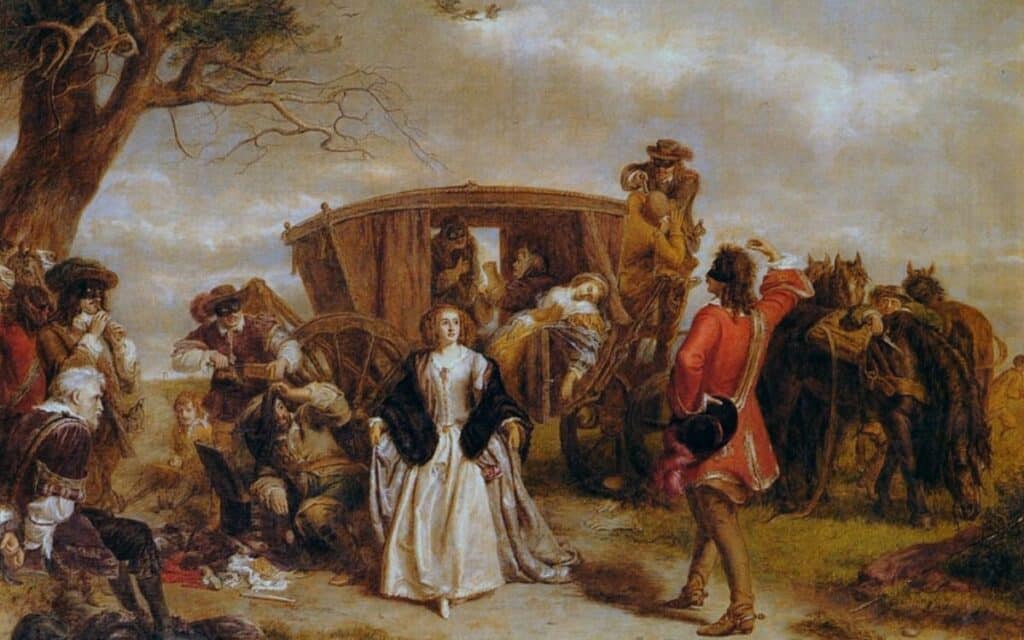
On one occasion, in Beaconsfield, Duval was staying at his favoured George Inn, now known as The Crazy Bear. He presumably had a good view of the weekly market, he would note a particular farmer leave the market each week, with a large bag of cash. Duval knew he had to be smart with this one, operating in the busy town centre would present many challenges. He observed the farmer enter The Crown Inn on London End, a notable inn where there was much drinking and dancing.
Duval went to the rear of The Kings Head, bribed a stable boy and devised a plan. They wrapped a dog in cow hide, somehow fixed antlers to its head and began to lower it down the chimney. By the time the dog reached the bottom it was ANGRY, it began to run about the inn, biting, barking, snarling. Duval, now inside the inn, remarked “My goodness – The Devil!” All the patrons inside began to frantically exit the building. Duval walked to where the farmer had been sitting, picked up the bag of cash, and made his way off.
Duval was eventually executed at Tyburn, despite having never used violence. A great number of notable people petitioned for his pardon, but to no avail. It was noted that 50 “Ladies of quality” attended his execution and wept. During research over the years I have encountered many people who claim to be descendants of Claude Duval. They probably are. He was a popular lad, if you catch my drift.
The tale of Jack Shrimpton
A good deal less popular than Duval was the more local Jack Shrimpton, from nearby Penn. It was recorded that “He did always the most damage betwixt London and Oxford, insomuch that scarce a coach or horseman could pass him without being robbed.”
Shrimpton was from a good family and studied a trade before joining the army. He knew that his military skills and knowledge of the local back roads would give him a great advantage. Shrimpton did have a soft side however, possibly inspired by a disdain for authority.
Along the road from High Wycombe to Maidenhead he encountered two bailiffs taking a poor farmer to jail. He enquired as to the nature of the debt, about £6. He instructed the bailiffs to join him at a nearby inn where he would pay the debt and buy the bond. The group met at the inn, the transaction took place. The bailiffs left and went about their business, Shrimpton bought the poor farmer a drink. After a while Shrimpton left the inn, caught up to the bailiffs and robbed them of everything, the £6 plus about 40 shillings. He then cancelled the farmer’s bond.
Shrimpton even took pity on a novice footpad who tried to rob him. A former miller turned crook attempted to rob Shrimpton with a stick shaped like a pistol. The miller, somewhat embarrassed that he was in the presence of a real and notorious highwayman, explained his difficult situation and how he was struggling to make ends meet.
Shrimpton offered him advice on how best to rob people, and even invited the unfortunate miller to join him in ambushing a target of Shrimpton’s who was soon to arrive at their location. This generous act soon backfired, the miller learned that the target was a friend and neighbour. Using his newly acquired advice, the miller attacked Shrimpton, knocking him off his horse and then robbed him.
Jack Shrimpton was eventually hanged in 1713 at St Michael’s Hill in Bristol, being found guilty of murder and five counts of highway robbery. It would be impossible to document each highwayman and footpad operating in the Beaconsfield back roads, a number of them were hanged in nearby High Wycombe.
Hauntings in Beaconsfield
Unsurprisingly, Beaconsfield has a number of reported hauntings. However, not all of them are of the distant past.
The now defunct Chiltern Cinema (soon to become a Wetherspoons pub) was managed by Walter Gay in the 1960s. Walter was particularly proud of his cinema, and after his death staff witnessed him still wandering the building!
A distinctive tall thin man, many customers approached this apparition of Walter, totally unaware that he had actually died in1978. It seems Walter “exercised” his managerial discretion during a screening of The Exorcist. The projectionist loaded the film and when the audience had settled started the reel, which then burst into flames!
In the 1980s, screenings of Ghostbusters were cancelled due to incessant technical problems, these problems did not persist when a different movie was shown. It seems Walter didn’t like supernatural films. Ironic.
On the edge of the town, to the east of London End, Wilton Park was once a grand estate of 400 acres, it was leased to the War Office for the interrogation of high ranking Nazi officials, eventually becoming a POW re-education camp after World War Two.
The impressive Georgian white house was demolished in the late 1960s, to be replaced by a tower block and army education buildings. The land was sold by the Ministry of Defence and recently developed for housing. Before the development could begin security guards were posted round the clock. These guards were kept busy throughout their shifts, chasing dark figures down corridors who then vanished, following disembodied voices around the area. A number of these guards refused to work there after just a few weeks.
Not every ghostly encounter leaves witnesses in fear. The ghost of “Charlie” haunts fhe former George Inn, referenced earlier.
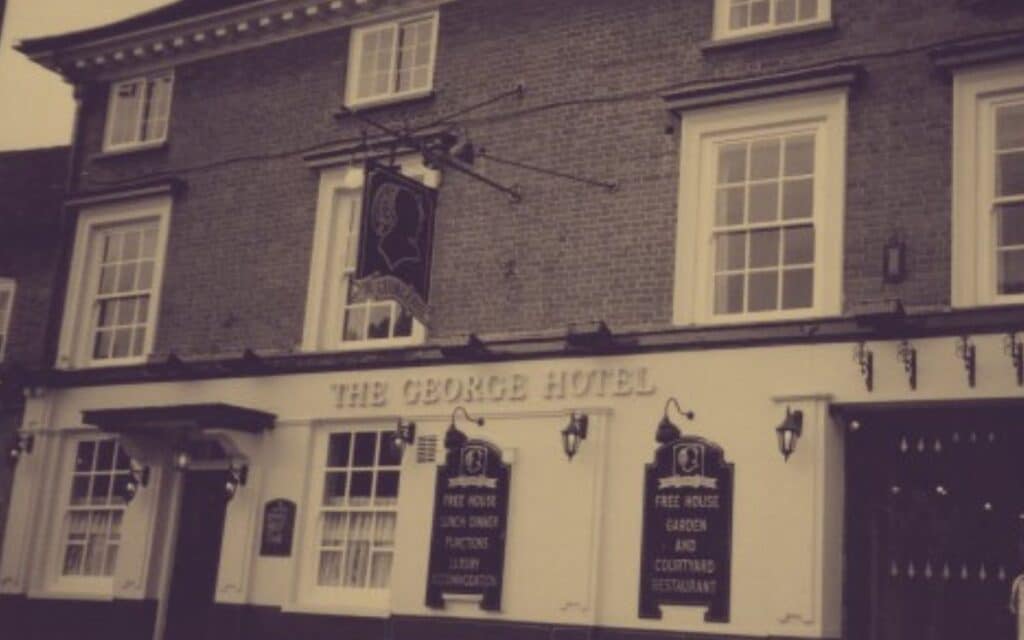
An inn has existed on this site since 1487. Charlie is said to be particularly friendly and smiling. Locals believed Charlie to actually be the ghost of Claude Duval. Among numerous other apparitions sighted at the inn, Charlie has been seen throughout the establishment, particularly in the loft area. Pam Parnham was resident at the inn during the 1940s, her parents being the managers.
In a letter to the Beaconsfield Historical Society, she noted that whenever Charlie walked around the attic area, a bolted heavy oak door would open on its own. Pam and others would hear heavy plodding footsteps going up and down the stairs. There doesn’t seem to have been any sightings in recent years. Indeed, the staff at The Crazy Bear are quite oblivious to the frequent hauntings of last century. Sadly, this is something of a common theme. Most of these old coaching inns became pubs, which are now mostly restaurants. The staff, managers and patrons tend to be transient, never learning or passing on the stories of old, unlike the landlords and regular drinkers of yesteryear.
One of the oldest drinking establishments in the old town is undoubtedly The Royal Saracens Head. Queen Elizabeth I and Oliver Cromwell have enjoyed its hospitality. There is evidence to suggest that an inn has existed on this site on the corner of London End and Windsor End since at least 1242. An intriguing local legend would put the inn a few decades even older than that.
The story goes that the “Royal” prefix was granted by Richard I, Richard the Lionheart. After a particularly boozy session Richard took his axe to the timbers of the inn. Waking the next day with a hangover and sense of embarrassment he paid for the damage and allowed the inn to be called “Ye Royal Saracens Hedde.”
This would not be the last time sharpened implements have flown around the inn. In recent years chefs have reported kitchen knives flying through the air, narrowly missing them and embedding in the walls. Typical of many poltergeist cases, the knives followed a trajectory from where nobody was stood or stationed. The kitchen area of the inn was historically used as a coroner’s court. An interesting apparition has been sited a number of times, a crying child has been seen throughout the building.
Directly across the road is a fish and chip shop, The Old Town Fryer. In the 1970s the owners, who lived upstairs, would hear a child crying throughout the night. Disturbingly, they would go downstairs the next morning to find the gas appliance taps fully opened, just one flick of a switch away from disaster.
It seems quite the coincidence that two separate, but neighbouring establishments have potentially dangerous phenomena centred around a crying child. It’s worth noting that on the same side of London End as the chip shop, a number of buildings were recorded as having been children’s tuberculosis convalescence homes at points, particularly in the Victorian era. We tend to think of hauntings being confined by brick and mortar, much as we are. Again when looking at better documented poltergeist cases, it does seem common for the activity to transcend the physical fabric of a building.
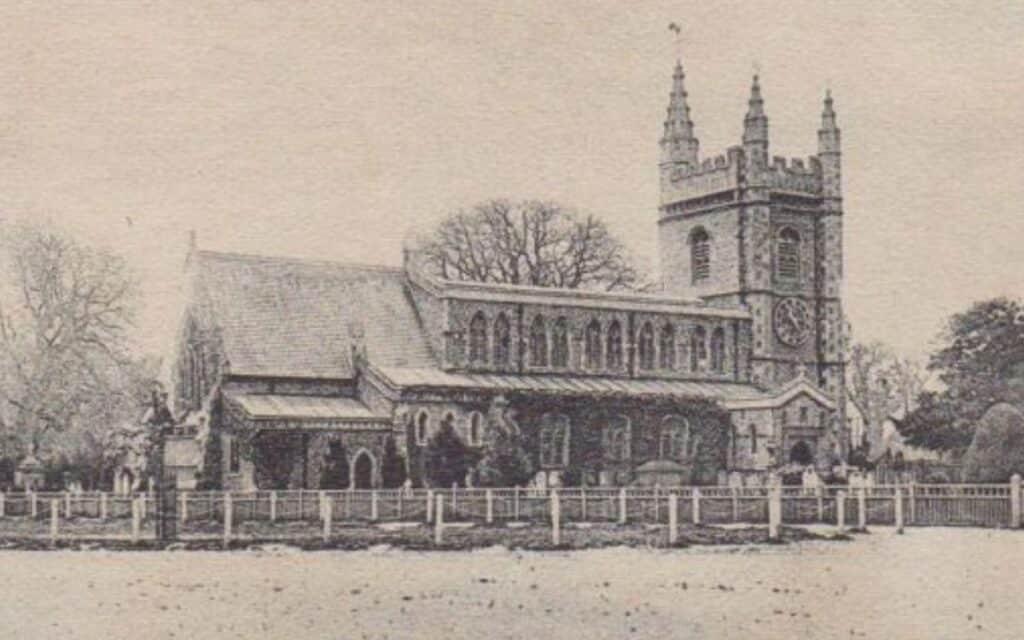
Many of you will have unwittingly seen St Mary’s and All Saints’ Church. It has regularly appeared in episodes of Midsomer Murders, Ricky Gervais’s Afterlife, and many more productions. The churchyard and adjoining Old Rectory is apparently haunted by a former vicar’s wife. This unfortunate lady met her demise after being “slippered to death” for adultery. Interestingly, there was a documented whipping post on Aylesbury End just across the road from the church, this was first noted in 1768.
The White Harte sits on the corner of Aylesbury End and London End, dating from 1622. It was a favoured stopping point for high ranking clergy en route to Oxford from London. Several apparitions described as monks have been seen multiple times in the bar and in staff accommodation. Non-specific poltergeist has been reported by former staff also.
I had my own experience just recently. After the first lockdown of 2020 I was asked by husband and wife friends if I could help them run an outdoor cinema at Beaconsfield Rugby Club, Windsor End. Of course, I jumped at the chance to work and catch up with these and other friends working at the event. I was stationed at the entrance to the field, directing cars to parking spots.
The first film started, but I remained at my post in case of late comers. I began to feel an incredible sadness, despair. This made no sense, it was a lovely sunny day, I was enjoying seeing friends and joking with the customers arriving. Yet, when on my own, I felt rotten. I quickly realised this was not my sadness, something was amiss in the area.
I explored the road outside, hidden behind an earth mound were bunches of flowers. Just one year previous a fatal car crash occurred on the spot, the earth mound being placed to prevent any repeat. I do not believe this area to be haunted. I was empathically aware of the outpouring of grief at the site.
Over the years I have been told of many other hauntings in Beaconsfield, those stories now forgotten. I worked in the town and would head to the pubs after work on Fridays. Each pub had its regulars, each of whom knew the legends. Lots of stories have been lost to time.
Have you seen something strange in Beaconsfield? Tell us about it in the comments section below!

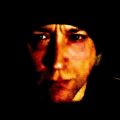
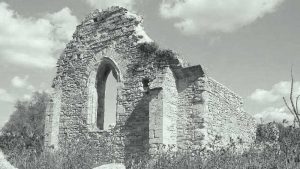
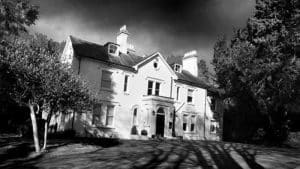
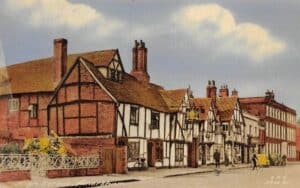
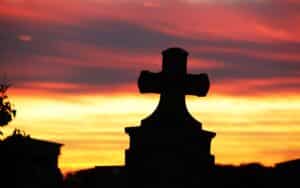

My mum used to work in Londis/ One Stop which is now tesco. I went to work with her early one morning and sat in the office. I saw a woman walking in the shop before it was open and told her. She went and checked and no one was there. When I was a little older she told Me that many workers have seen a woman over the years or heard chains and that years ago there was a well out in the yard and a woman had fallen down it and the only thing they had to pull her up was chains, which unfortunately slipped and killed her.
Thanks for telling us about your experience, Emma. You don’t have to be an old castle or graveyard to witness the paranormal!
I live in Garvin Avenue and we have on many occasions had a figure we think it’s a female running down our stairs and through into the hallway. My partner has also been into our bedroom and found things moved around.. Our houses were built in early 1950’s, I know we used to have a pond or something similar where our back garden is…
Feel free to give me a shout if you would like this looked into
I have seen the wide lady that walks along the penn road between Cruzon on avenue and knottocks drive she disappears into the bushes but forms a white ghostly figure at night..